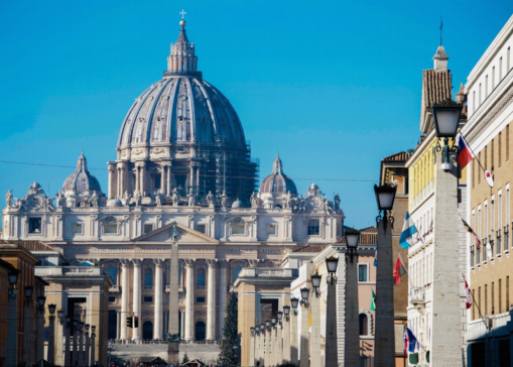Nestled beneath the grandeur of St. Peter's Basilica lies a hidden world of ancient history and reverence - the Necropolis and Tomb of St. Peter. Through ongoing excavations and discoveries, this sacred site continues to reveal its secrets, sparking debates and intrigue among scholars and believers alike. With its rich architectural features and deep significance in Christian tradition, the tomb of St. Peter remains a focal point of pilgrimage and discovery in Vatican City.

Excavations and Discoveries in St. Peter's Tomb
Excavations and Discoveries in St. Peter's Tomb
The excavations and discoveries in St. Peter's Tomb have revealed a wealth of information about the early Christian community and the history of the site. Archaeologists have uncovered a number of important findings, including evidence of a first century burial ground and the remains of a wall that may have belonged to the original shrine built over the tomb of St. Peter. Additionally, excavations have uncovered graffiti and inscriptions that provide insights into the religious beliefs and practices of early Christians. These discoveries have shed light on the significance of St. Peter's burial site and its importance in the history of Christianity.
Significance of St. Peter's Burial Site
The significance of St. Peter's burial site cannot be understated. As one of the twelve apostles and a key figure in the establishment of the Christian church, St. Peter holds a special place in the hearts of believers around the world. His tomb is considered one of the holiest sites in Christianity and has been a place of pilgrimage for centuries. The presence of St. Peter's remains at his burial site serves as a powerful symbol of the faith and a reminder of the enduring legacy of one of the most important figures in Christian history.
Theories and Controversies Surrounding St. Peter's Tomb
Theories and Controversies Surrounding St. Peter's Tomb
The tomb of St. Peter has been the subject of much speculation and debate among historians, archaeologists, and theologians. One of the main controversies surrounding St. Peter's tomb is whether it is indeed the final resting place of the first pope. Some scholars argue that the lack of definitive evidence, such as inscriptions or artifacts directly linking the tomb to St. Peter, casts doubt on its authenticity.
Another theory suggests that the tomb may have been created or moved in later centuries to solidify the authority of the Catholic Church. This theory is based on the fact that the location of St. Peter's tomb was not officially confirmed until the 1940s, leading some to question the validity of its claim.
Furthermore, there are differing beliefs about the historical significance of St. Peter's burial site. While many Catholics and Christians view the tomb as a sacred and holy place, others question the emphasis placed on a physical location in religious practice.
Overall, the theories and controversies surrounding St. Peter's tomb highlight the complex and fascinating history of this important archaeological site. Properly understanding and interpreting the evidence surrounding the tomb is crucial in order to appreciate its significance in both religious and historical contexts.
Architectural Features of the Necropolis beneath St. Peter's Basilica
The Necropolis beneath St. Peter's Basilica is a complex system of tombs and chambers dating back to the Roman period. The architecture of the necropolis is characterized by narrow passageways, small chambers, and intricate frescoes decorating the walls. The layout of the necropolis suggests a carefully planned design that allowed for the interment of multiple individuals in a relatively small area. The presence of pagan symbols and inscriptions within the necropolis indicates the diverse cultural influences present in ancient Rome. The architectural features of the necropolis provide valuable insights into the funerary practices of the time and the social status of those buried within its walls.
